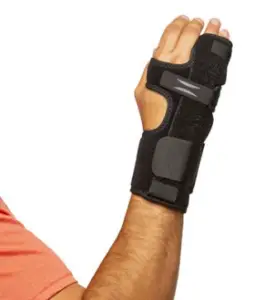Orthopedic Braces Prescription
In most cases, whether you need a prescription for a brace depends on the type of brace and the situation. Here’s a breakdown:
Medical Necessity and Insurance: If a brace is medically necessary and you want insurance or Medicare to cover the cost, you typically need a prescription. For instance, braces used for post-surgical support, chronic conditions, or injury recovery often require a doctor’s order for insurance reimbursement.
Over-the-Counter Braces: Many braces, like basic knee braces or wrist supports, can be purchased without a prescription at pharmacies or online. These are typically for mild injuries or preventive support.
Custom or Specialized Braces: For more complex conditions (e.g., scoliosis braces, custom-fitted knee braces, or spinal braces), a prescription is usually required. These braces are often fitted to the patient and are more specialized.
Legal Requirements: Some braces, especially those that claim to have a therapeutic or corrective effect, may be regulated as medical devices and require a prescription based on local regulations (e.g., U.S. FDA regulations).
If you’re unsure, it’s best to consult a healthcare provider, as they can determine the necessity and help you with the right type of brace.
Synthetic Biologics
Tissue Scaffolds and Regenerative Materials:
- Description: These are engineered structures, often made from biodegradable synthetic polymers (like PCL, PLA, PLGA) or composites combining synthetic and natural materials (like collagen, hyaluronic acid). They are designed to provide temporary physical support while encouraging the patient's own cells to infiltrate, grow, and regenerate new tissue (e.g., bone, cartilage, skin).
- Synthetic Biology Aspect: The design often involves precise control over architecture (pore size, interconnectivity), degradation rate, surface chemistry (to promote cell adhesion), and sometimes the incorporation of signaling molecules or growth factors (which might themselves be produced via recombinant DNA technology).
- Surgical Use: Orthopedic repair (bone voids), cartilage repair, wound healing, nerve regeneration conduits

Knuckle Orthosis: Purpose, Benefits, and Applications
Knuckle Orthosis Knuckle Orthosis: Purpose, Benefits, and Applications A Knuckle Orthosis is a specialized medical device designed to provide stability, support, and protection to the metacarpophalangeal (MCP) joints—the knuckles of the hand. These orthotic devices are commonly used in the… Continue Reading…

Wrist and Hand Braces: Support, Relief, and Rehabilitation for Hand and Wrist Conditions
Wrist and Hand Braces Introduction Wrist and hand braces are essential tools for individuals managing pain, recovering from injuries, or dealing with chronic conditions such as carpal tunnel syndrome, arthritis, or tendonitis. These braces provide stability, compression, and support to… Continue Reading…

Orthopedic Shoulder Braces: Support for Shoulder Injuries and Chronic Conditions
Orthopedic Shoulder Braces Introduction Orthopedic shoulder braces are designed to provide support and stabilization for individuals recovering from shoulder injuries, managing chronic shoulder pain, or undergoing post-surgical rehabilitation. These braces help alleviate discomfort, protect the shoulder joint, and prevent further… Continue Reading…


